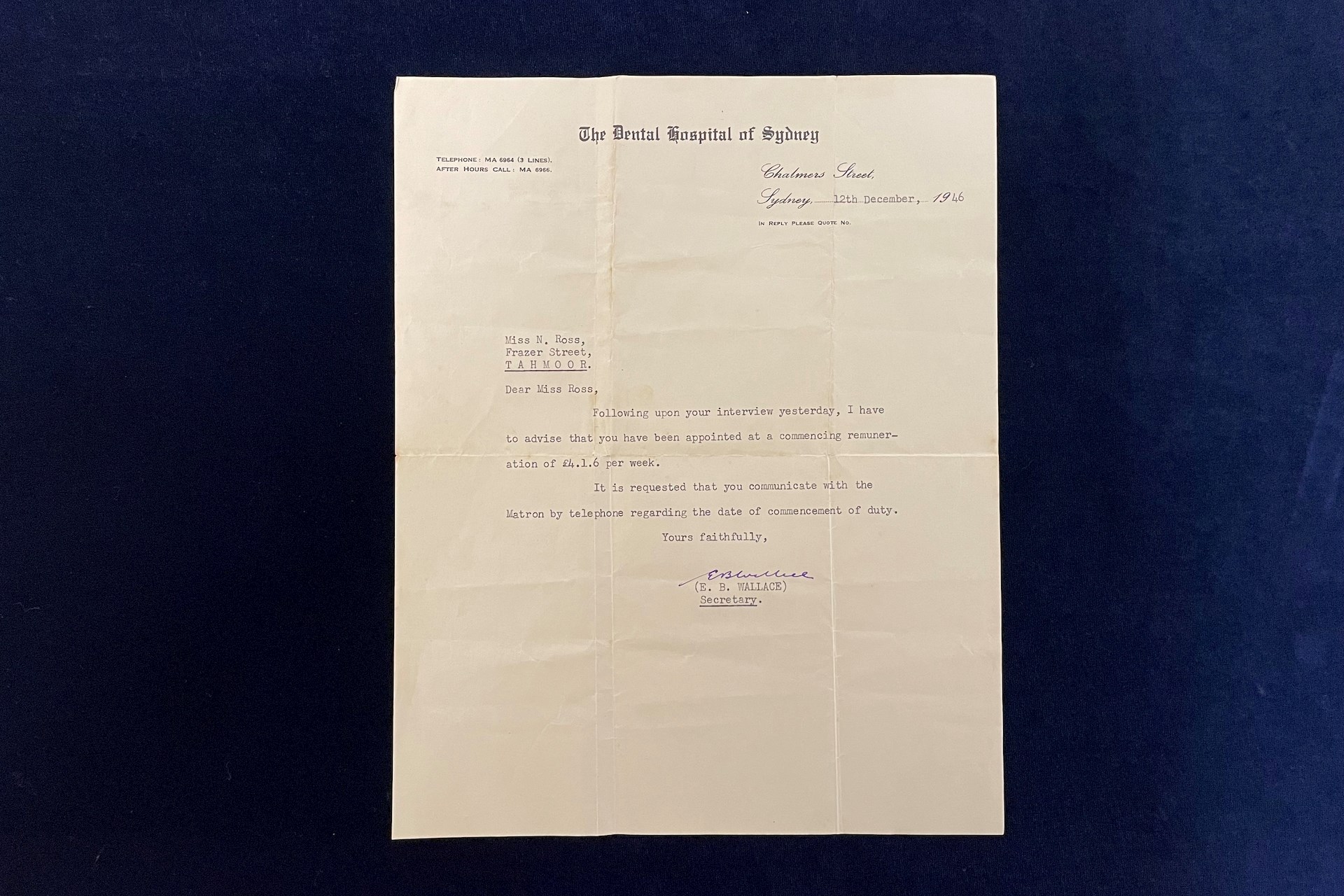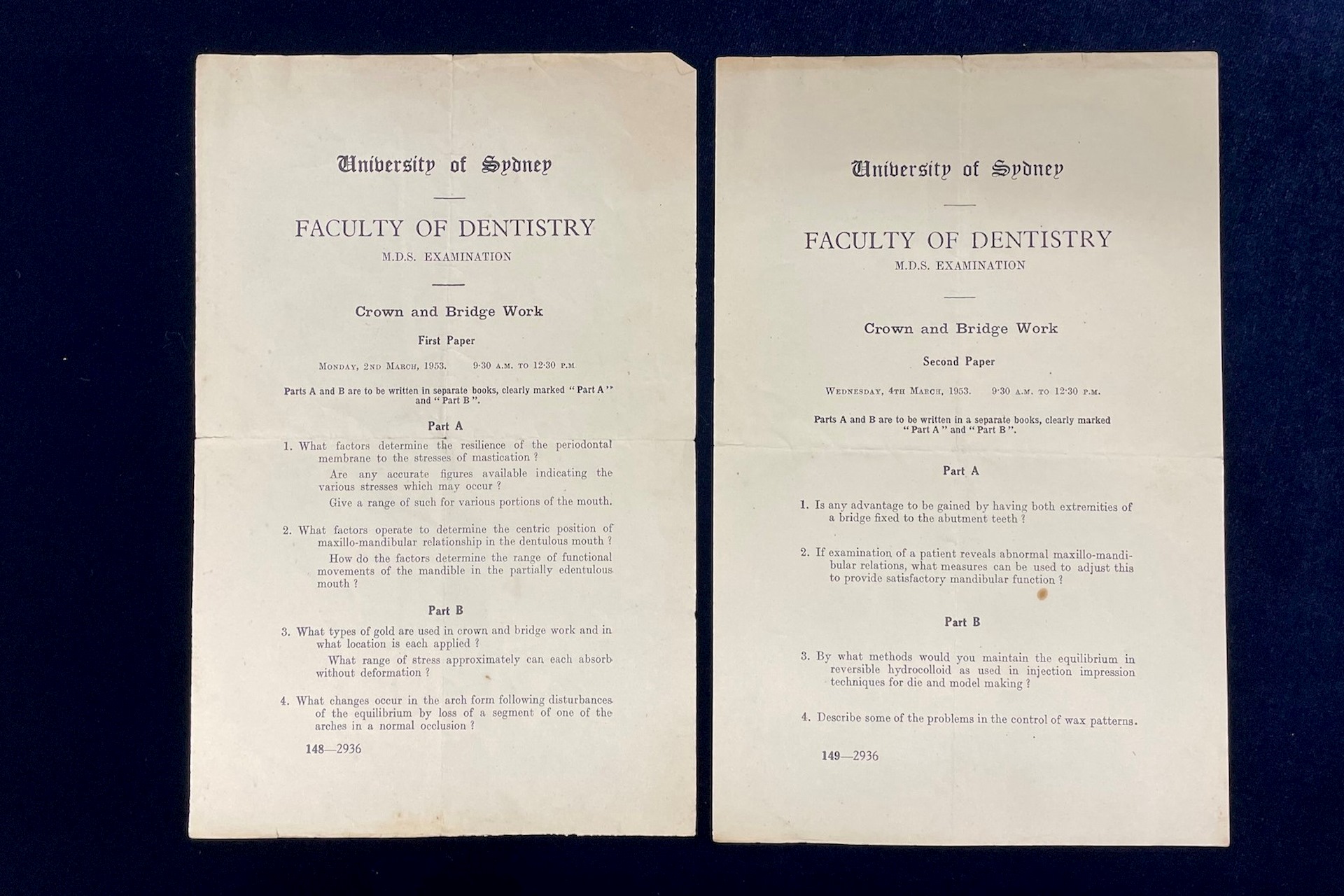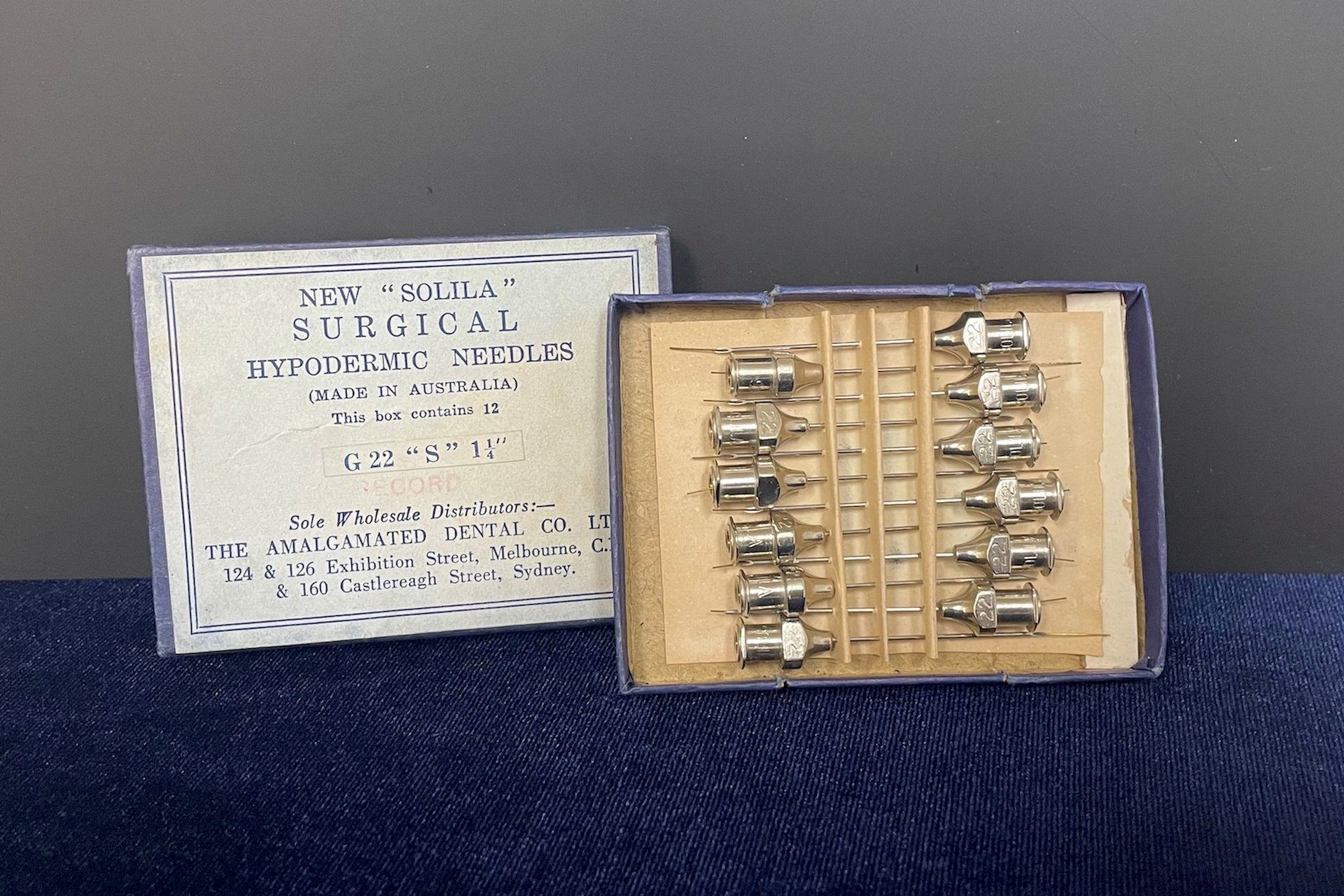
Objects from the Collection
Oral health education and technology has changed significantly over the last 120 years. This small collection showcases objects once used at the hospital.
Administrative Letter

Employment letter for Sister Norma Sydney Ross who worked as a dental nurse for four years resigning from her position in 1950. The Norma Sydney Ross collection holds several administrative letters and photographs of her time as a dental nurse.
Following upon your interview yesterday, I have to advise that you have been appointed at a commencing remuneration of £4.1.6 per week.
– E.B. Wallace, United Dental Hospital Secretary, 1946
Dental Articulator

Dental articulators are instruments that aim to reproduce the range of movement of the jaws. Upper and lower jaw casts are attached to the articulator to recreate the jaw and teeth positions for examination and study. The most common use of the articulator is in the diagnosis and the arrangement of artificial teeth. This articulator is fitted with a back rest so that it can be tilted on the bench for viewing the occlusal plane.
There are a wide variety of articulators, some simple in design with a single hinge while others are extremely complex attempting to mimic all the nuances of jaw movements.
– Dental Student, 2024
Dental Examination Documents

This 1953 University of Sydney Faculty of Dentistry M.D.S exam paper is on Crown and Bridge Work. The exam paper also includes Prosthetic Dentistry and Operative Dentistry. It comes from the Dr Frank Jenkins Collection.
Surgical Hypodermic Needle Pack

The hypodermic needle (hypo – under, dermic – skin) is used for local anaesthetic administration and the rapid delivery of medication. In dentistry, medication is usually injected into the inner cheek or gum to numb the area undergoing treatment. Common gauges include: 25, 27, and 30. The larger the number, the smaller and thinner the gauge. Gauge selection is determined by the depth of injection required and the risk of intravenous injection.
Patients sometimes feel painful burning sensations when injections are being made wither because the local anaesthetic is given too quickly, or due to differentiating pH levels between the patient’s mouth and the anaesthetic solution being provided.
– Articulator Magazine, 1963